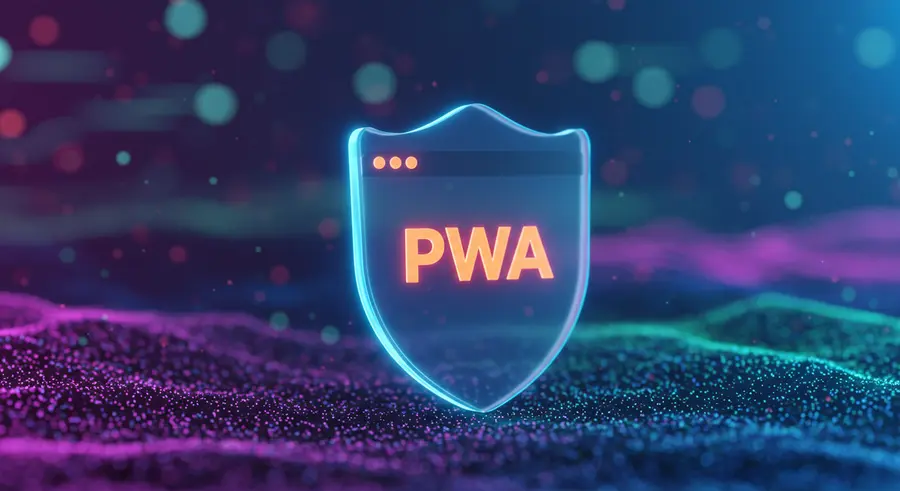Appearance

Welcome, fellow developers and tech enthusiasts! 👋 In today's interconnected world, the security of our web applications is paramount. As Progressive Web Apps (PWAs) continue to blur the lines between web and native experiences, ensuring their robustness against cyber threats becomes even more critical.
PWAs offer incredible advantages: offline capabilities, push notifications, and app-like experiences, all delivered through the web. But with great power comes great responsibility – and a need for stringent security measures. This article will dive deep into the essential best practices and strategies to fortify your PWAs, making them resilient against the ever-evolving threat landscape. Let's unlock robust security together! 🚀
Why PWA Security is Non-Negotiable
Just like traditional websites and native apps, PWAs handle sensitive user data, perform transactions, and interact with various APIs. A security lapse can lead to data breaches, reputational damage, and loss of user trust. While PWAs inherit many security benefits from the web platform (like HTTPS), they also introduce unique considerations, especially concerning Service Workers and caching mechanisms.
Core Pillars of PWA Security
Let's explore the fundamental strategies to build secure PWAs:
1. Always Enforce HTTPS 🛡️
This is the bedrock of web security, and for PWAs, it's an absolute must! HTTPS encrypts all communication between the user's browser and your server, protecting data from eavesdropping and tampering. Without HTTPS, Service Workers simply won't register, making your PWA incapable of its core functionalities.
- How to implement: Ensure your server is configured to serve all content over HTTPS. Use SSL/TLS certificates from a trusted Certificate Authority (CA).
- Benefits: Data integrity, confidentiality, and authentication. It also builds user trust and is a ranking signal for search engines.
2. Secure Your Service Workers 👷♀️
Service Workers are powerful, acting as a proxy between your PWA and the network. This power, if misused, can become a vulnerability.
- Scope Definition: Carefully define the scope of your Service Worker. It should only control the pages it needs to, minimizing its reach to prevent unauthorized access to other parts of your domain.
- Cache Management: Be diligent about what you cache. Never cache sensitive user data or authentication tokens directly in the Service Worker cache. Regularly audit cached content.
- Update Strategy: Implement a robust Service Worker update strategy to ensure users always run the latest, most secure version of your PWA.
- No Interception of Sensitive Data: Service Workers should not intercept or manipulate sensitive user credentials or critical API requests.
3. Input Validation and Sanitization 🧹
Prevent common web vulnerabilities like Cross-Site Scripting (XSS) and SQL Injection by meticulously validating and sanitizing all user inputs, both on the client-side and, more importantly, on the server-side.
- XSS Prevention: Escape or sanitize any user-generated content before rendering it on the page. Use Content Security Policy (CSP) headers to mitigate XSS attacks.
- SQL Injection Prevention: Use parameterized queries or Object-Relational Mappers (ORMs) when interacting with databases.
4. Robust Authentication and Authorization 🔑
Implement strong authentication mechanisms and ensure proper authorization checks are in place for all sensitive operations.
- Multi-Factor Authentication (MFA): Where possible, offer or enforce MFA for enhanced security.
- Secure Token Handling: If using tokens (e.g., JWTs), store them securely (e.g., HttpOnly cookies for refresh tokens, memory for access tokens) and ensure they have appropriate expiration times. Avoid storing sensitive tokens in
localStorage. - Rate Limiting: Protect your authentication endpoints against brute-force attacks by implementing rate limiting.
5. Content Security Policy (CSP) 📜
A strong CSP is your first line of defense against many client-side attacks, including XSS and data injection. It specifies which resources (scripts, stylesheets, images, etc.) the browser is allowed to load and execute.
- Implementation: Configure strict CSP headers to only allow resources from trusted sources.
6. Regular Security Audits and Penetration Testing 🔍
Security is not a one-time task; it's an ongoing process. Regularly audit your PWA for vulnerabilities and conduct penetration tests.
- Automated Scanners: Utilize automated security scanning tools as part of your CI/CD pipeline.
- Manual Testing: Engage security professionals for manual penetration testing to uncover complex vulnerabilities that automated tools might miss.
- Stay Updated: Keep all your libraries, frameworks, and dependencies up-to-date to patch known vulnerabilities.
Beyond the Basics: Advanced Considerations
- WebAuthn (FIDO2): Explore passwordless authentication using WebAuthn for a more secure and user-friendly login experience.
- Subresource Integrity (SRI): For critical third-party scripts, use SRI to ensure that the files you fetch haven't been tampered with.
- Feature Policy (now Permissions Policy): Control which browser features your PWA can access (e.g., camera, microphone) to enhance security and user privacy.
Linking Back to the Core of PWAs
This deep dive into PWA security complements the fundamental understanding of Progressive Web Apps. For a refresher on the core concepts and power of PWAs, check out our comprehensive guide: The Power of Progressive Web Apps (PWAs).
Conclusion 🎉
Building a secure PWA requires a proactive and multi-layered approach. By prioritizing HTTPS, diligently managing Service Workers, validating inputs, implementing robust authentication, and regularly auditing your application, you can significantly reduce your PWA's attack surface and build a trustworthy, resilient web experience for your users.
Stay secure, stay progressive! ✨